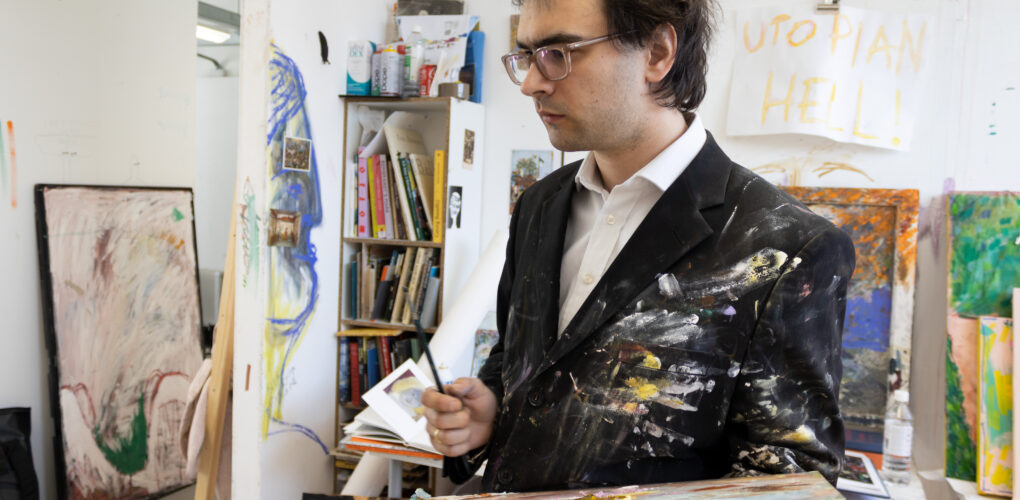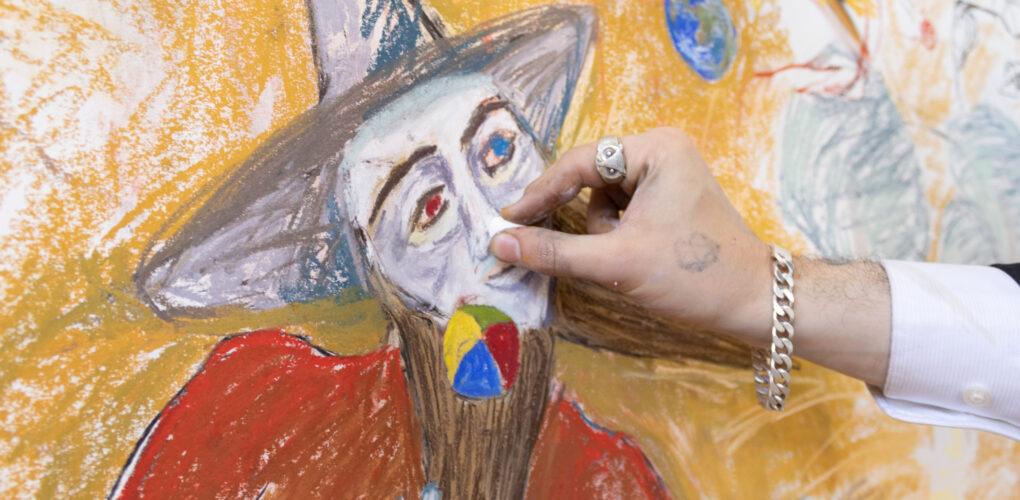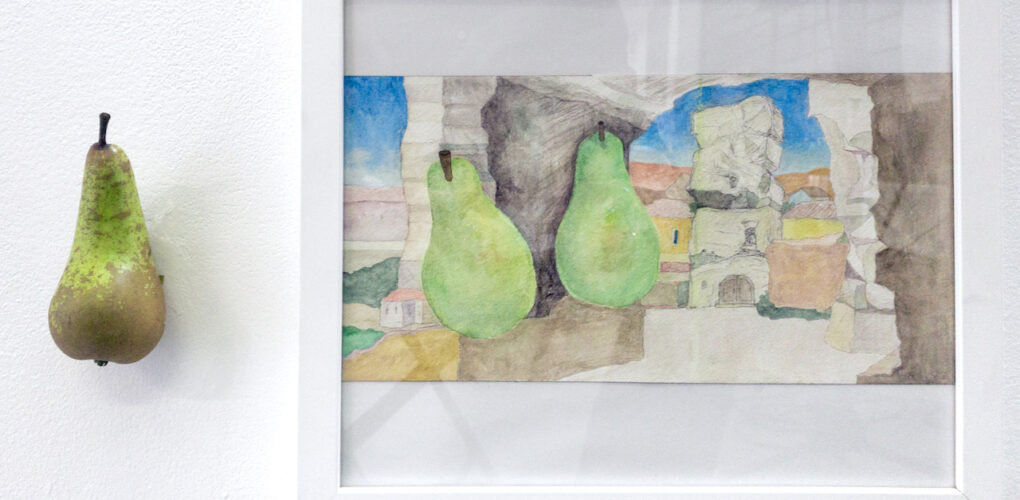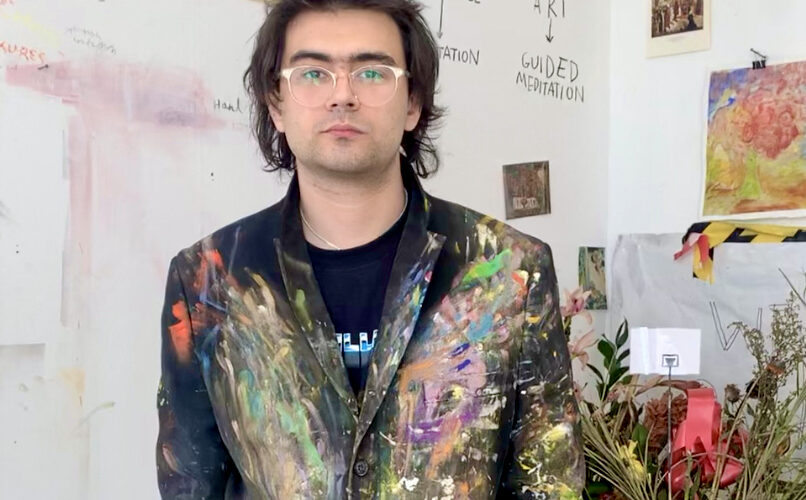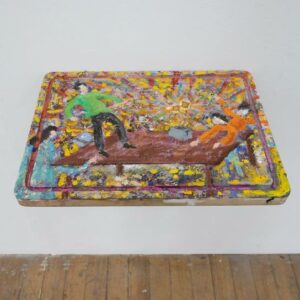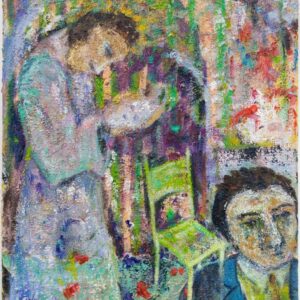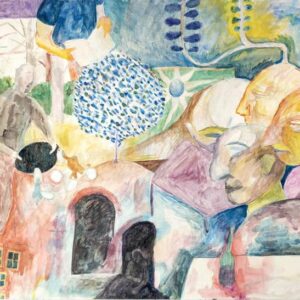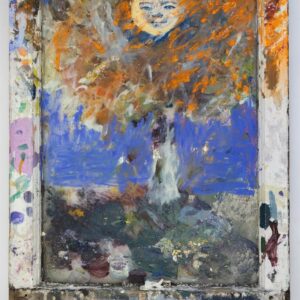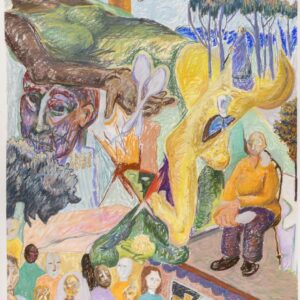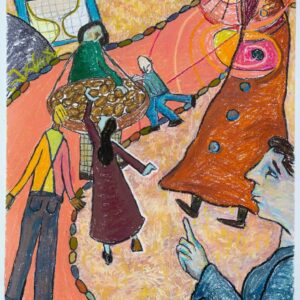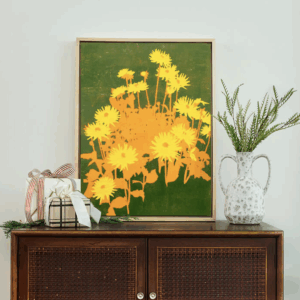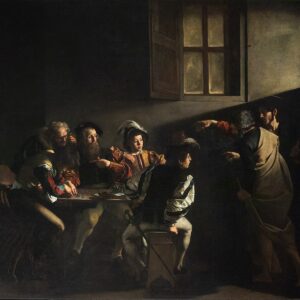One to Watch
 Oscar Marcus Boyle on Creative Forgeries, Phenomenology, and Political Art
Oscar Marcus Boyle on Creative Forgeries, Phenomenology, and Political Art
Glasgow-based artist Oscar Marcus Boyle explores themes of neurodivergence, phenomenology, and anthropocentrism in his mixed-media paintings, drawings, and prints. Oscar’s brightly colored gestural works invite viewers to question the cultural history of his subject matter. Oscar earned his BA at the Slade School of Fine Art at The University of College in London, UK. He is currently located and pursuing his MLitt at the Glasgow School of Art in Scotland. Oscar’s work has been published by the literary zine, Versification and Eyot Magazine.
Tell us about who you are and what you do. What’s your background?
Hi, my name is Oscar Marcus Boyle. I was born in 1997 and grew up around a city named “Britain’s most average place” by the BBC in 2017. I did my undergrad down at the Slade in London, and I just completed a postgrad at The Glasgow School of Art. I make a bit of everything, but right now, I’m focusing on pastel drawing, sculpture, and prose writing. I think we’re about to have a big ‘expanded photography’ moment, so I’m looking into that as I compulsively take photos of pretty much any cool tree or weird light condition I come across.
What does your work aim to say? What are the major themes you pursue in your work? Can you share an example of a work that demonstrates this?
I make a lot of work about bread. It’s a great subject—you can bring it up with anyone, and they will have some story about it. I’ve learned about people’s family bakeries, their lockdown sourdough successes, and failures, and even being gluten intolerant is a position. It has complications, too—there’s nourishment, but there’s the absence of bread, famine, or I did one piece that used the way feeding bread to ducks can mess up duck ponds and kill marine life as a way to look at climate catastrophe and anthropocentrism. Outside of that, I’ve recently made work about my experiences with mental illness and things like phenomenology, semiotics, and art history. I’m mentally ill, so when I’m driven to make consciously autobiographical work, which I try not to do often, I’ve explored my experiences with neurodivergence. But one of my diagnoses is ADD, so I’m always looking at a million things at once. Right now, I’m starting a series looking at mirrors as a technological and cultural phenomenon.
Can you walk us through your process for creating a work from beginning to end?
Honestly, I find process quite hard to talk about because it’s not something I’m usually very aware of. Everything I make is really just a series of haptic accidents, imperfect reproduction, and extra-conscious obsessional activities. I usually go to the studio, sit down, pick up a book and/or art-making tool, and go into a daze for five, six, or seven hours until I’m too hungry or tired to keep going. It’s not that there’s not a lot of intellectual labour in my work, there’s a lot of narrative and image games and historical reference and deliberate compositional structuring, but everything is discursive—I’m very open to change, and if I ever try to plan stuff either I diverge from those plans so radically that they quickly become irrelevant to the process, or if I try and stick to them the work can ossify and become impossible to work on.
Who are your biggest influences, and why?
I’m very gullible. Everything influences me, whether I like it or not. I’ve never met anyone else that advertising works on as well as it does on me. So I embrace that in my art. Not with advertising; I hate most pop art (but love pop) and irony, and the solution to collapsing high/low culture as making work that uses an indiscriminate and uncritical regurgitation of signifiers of contemporaneity. In painting, I tend towards artists who fracture space, form, and time in their paintings, people who seem distinctly aware of the mechanisms of narrative, image-making, and how you can bend and stretch representation in exciting different ways. My gods are Marc Chagall, Charlotte Salomon, the Mughal, and the Persian Miniaturists, Max Beckmann and der Blaue Reiter.
How does your work comment on current social and political issues?
I try not to be too didactic with my work. Although I am highly political, I don’t currently trust myself capable of presenting a political rubric watertight enough to be useful or safe for an audience to be exposed to, not that that seems to stop a lot of artists. I don’t usually get my politics from art. The politics that make it into my work, I think, largely manifest themselves as an attempt to emphasise a sort of collectivity, to try and turn away from neoliberal identitarianism.
If I’m not overtly political, I try and make work that isn’t politically deleterious. Before a particular family (if you’re reading this, you know who you are) saved my life, I used to make work that reflected some of the abject horrors of our world, there was a lot of violence and cynicism, but over the last few years, I’ve developed this feeling that it’s possible to make work that is optimistic, playful, bright, gentle, warm but which is simultaneously not naïve to misery and evil. I feel a lot of doom, but I try not to react to that with bitterness.
How do you hope viewers respond to your works? What do you want them to feel?
I hope to make work that people could stare at for hours, that slowly unfolds with both explications and complications. Like a Bruegel painting or one of those M.C. Escher works where the more you stare at it, the closer you get to understanding what’s going on, but then it also begins to exude this magical atmosphere and resists total logical understanding. That complication of sense is so interesting to me, and I think placing that emphasis on non-stationary, unresolved thinking gives the highest likelihood of having some kind of generative effect in the world. You can have a transcendent experience staring at anything for 3 hours, but if someone ever stared at something of mine for 3 hours, I would want that experience to have been clearly, qualitatively unique. But I also want someone to get something worthwhile if they stare at it for 30 seconds or 10. There should be some instant fun built in, which is why I use humour and vibrant colour palettes often.
What was the best advice given to you as an artist?
One time in Slade, I was getting back into oil painting after a years-long lapse. I made this piece based on a Goya drawing. All mulchy greens, greys, washed-out primary colours, and fussy but incompetent draughtsmanship. I had a meeting with one of my tutors, Liz Rideal. She looked at the painting for a while and said, “it’s just not very good, is it?”. And she was right! You don’t get a lot of straight-up negative value judgments in art school, but I think they can be so important. Hold yourself to a high standard. It’s been years, and I still ask myself with every piece, “Ok, but is it good.” If the answer is no, don’t beat yourself up because that’s not healthy. Just, Make it Better.
If you could only have one piece of art in your life, what would it be?
A few years ago, there was a fake Chagall watercolour dated 1909-10 that came on the TV show “Fake or Fortune.” The Chagall Committee in Paris looked at it and determined it was inauthentic and said that under French law, the work needed not only to be confiscated but incinerated in a furnace. Creative art forgeries, which is to say forgeries not based on specific works by the copied artist, have always fascinated me. Since I found out about the condemned fake Chagall, I’ve never grown tired of looking at it, so I think I’d save that one.
Love reading about all things art? You can have articles from Canvas, curated collections, and stories about emerging artists delivered straight to your inbox. Sign up for the Saatchi Art Newsletter.
